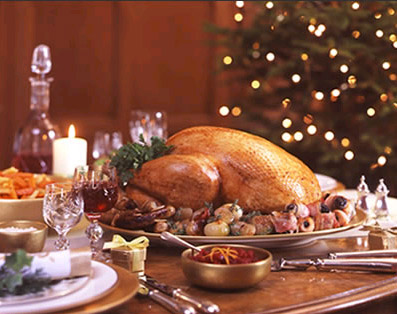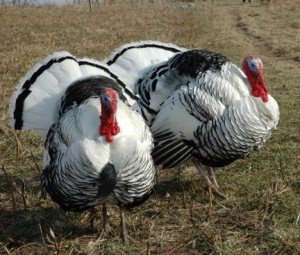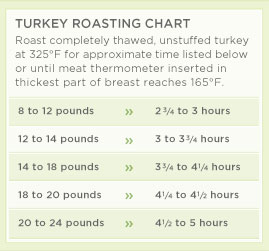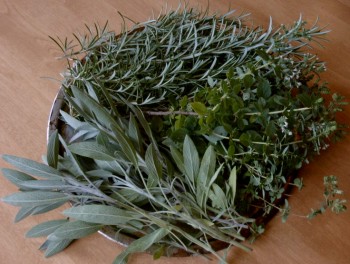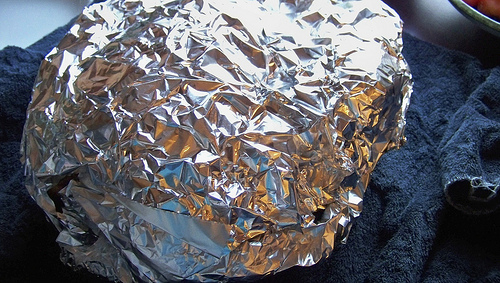- HubPages»
- Food and Cooking»
Updated on October 24, 2014
Caroline is a writer with a passion for great cooking & sustainable, humane food sources.
Contact Author
Cooking a Flavorful Turkey
Forget brining (I've tried it and it isn't worth the hassle). Forget frying (it's dangerous and bad for your health).
The best turkey is a combination of a high-quality, fresh bird, temperature, prevention of burnt skin, herbs, and leaving well enough alone.
In the early 1990s, as a young wife and an aspiring cook, I stumbled on a recipe for an herbed turkey in a Thanksgiving issue of Bon Appetit . Ever since that Thanksgiving, I have used that recipe as the basis for what has become the Best Turkey Ever. Other recipes have tempted me over the years--but I keep coming back to my never-fail turkey, guaranteed to please even the most avid turkey-haters (e.g., my father-in-law).
Selecting the Best Turkey
Over the past 20 years, I have tried all types of turkeys: frozen Butterballs, frozen organic, fresh organic, frozen kosher, fresh kosher, fresh brined, and fresh local. I've roasted all sizes--from 12 lbs to this year's 25 pounder--using a variety of methods, including brining, breast-side down, and even, (forced by my mother-in-law) in an oven bag.
I have come to the conclusion that no matter the size of turkey, you can prepare a delicious, moist turkey if you order a fresh bird from a reputable local source.
In my experience, defrosted frozen turkeys have the potential to be the driest. You also have the additional worry of making sure the bird defrosts on time. For the time-pressed, a fresh kosher turkey is basically a pre-brined bird, as brining is a part of the kosher process. Kosher poultry, however, is very expensive.
The best option is purchasing a fresh turkey from a local or regional source. Whether the bird is organically or conventionally raised is your choice. I place orders with a neighborhood butcher who buys from a local poultry farm that has a reputation for high-quality turkeys and chickens. You also might find that some of your local poultry farms are unofficially free-range and/or organic, which means that they follow organic and/or free-range protocols but don't want to spend the money in the certification process.
Turkey Roasting Methods
Brining is an increasingly popular method to add flavor and decrease the chance of a dry bird. I have brined a turkey based on Alton Brown's brining recipe. It was good, but the increase in flavor was not so great as to justify the time, refrigerator space, and expense (juniper berries) to use this method again.
I am intrigued by the outdoor deep-fried turkey but have hesitated to use this method because of the danger. No-oil infrared turkey fryers are now available, but nothing beats the aroma of a herb-roasted turkey wafting out of the kitchen in the morning.
I no longer roast upside down, like my mother did. Instead, I use a never-fail, two-temperature roasting method, minimize the opening of the oven door to maintain a constant cooking temperature, and place a flavorful onion and apple in the turkey's cavity to create interior steam. I also use a foil shield, which is explained below.
Whatever you do, please, do not use the oven-bag method. You may have a shorter cooking time, but you are encasing your bird in plastic and may end up with a sad, pale, steamed bird that looks like it just came out of a sauna--not to mention the dubious plastic chemicals that may transfer from the bag to your turkey during roasting.
Equipment You Will Need
You don't need an expensive stainless-steel heavy roasting pan. In fact, the last few times I've roasted a lighter bird (under 20 pounds), I've stuck with doubling up two cheap foil roasting pans from the grocery, making clean up so much easier. I recommend a real, metal roasting pan for turkeys over 20 pounds, although some of the disposable roasters now have wire re-enforcements and handles.
Equipment:
Aluminum Foil
Roasting Pan
Rack (optional, but recommended)
Meat Thermometer
Ingredients for the Best Roast Turkey
- 1 whole turkey, If you like leftovers, estimate 1 pound per person
- 1 peeled onion, halved
- 1 Granny Smith apple, halved, cored
- 1 stick butter, room temperature
- 28 oz vegetable or chicken broth, I prefer Imagine brand
- 2-4 tbsp dried rosemary
- 2-4tbsp dried tarragon
- 2-4 tbsp dried sage
- 2-4 tbsp dried thyme
- 1 tbsp ground black pepper
- 1 tbsp salt
Roasting Instructions
1. Preheat your oven to 425 F. Place your roasting rack inside of your roasting pan.
2. Prepare your turkey. Take your turkey out of all of its packaging and be sure to pull the neck and gizzards out of the cavity. Put aside for boiling for giblet stuffing or gravy--or at least give the giblets to your dog.
3. Rinse your turkey inside and out with water, then pat dry.
4. Place the turkey, breast side up, on roaster rack.
5. Create your Turkey Shield. This foil shield will keep your turkey skin from burning before your bird is done cooking. Take a large piece of foil and cover your turkey. Press down so the foil forms to the shape of your turkey. Be sure to create shields for the legs and wing tips. Remove. Set aside.
6. Peel your onion and chop in half, lengthwise. Slice your apple in half and core it. Place apple and onion halves into the cavities of the bird. You will not eat these halves--remove them before carving your turkey.
7. Massage your turkey with the softened butter. Be very liberal with the butter.
8. Sprinkle your bird lightly with kosher salt.
9. Mix your herbs together. How much to use depends on how big your turkey is. Not including the salt, the ratio is 1:1 for all the herbs, except the black pepper. I suggest starting with 2 tbsp rosemary, thyme, tarragon, and sage, and 1 tbsp black pepper. Build up from there. In the end, you want the turkey almost completely covered with the herbs.
9. Rub your herb mixture over the turkey. Be very liberal here. Mix more herbs together if you don't have enough to cover thoroughly.
10. Pour chicken broth into pan--enough to cover bottom of roasting pan by about 1/4-inch.
11. Put bird in the oven without the shield. Set timer to 30 minutes.
12. After 30 min., turn heat down to 325 degrees and put your Turkey Shield onto your bird. Your bird will cook at this temperature until your meat thermometer registers 180 degrees. (about 15 min. per pound). Do not stick a thermometer into your turkey until near the time it could be done.
13. Now, here's the hard part: Do not keep opening and shutting the oven door to check on the turkey. It's really hard, so I allow myself one quick peek every 90 minutes, mainly to check on the broth. You should have plenty because of the butter and turkey juices. If, by chance you need more, simply pour in enough to keep about 1/4" on the bottom of the pan. Do not baste broth onto the turkey.
14. When the turkey is expected to be nearly finished, place your meat thermometer into the thigh--but not touching the bone. Do not worry about the temperature of the apples and onions, as they are not being eaten.
15. If you are short on oven space and need to finish another dish, you can remove your turkey at about 178 degrees and let it finish while it sits on the stovetop. Contain the heat by placing kitchen towels over the turkey. Do not turn on the burners--the bird will keep cooking just from its own heat.
16. It is best to let your turkey sit for about 20 after pulling from oven and before carving. Remember to remove the apple and the onion before serving: They are not edible.
Enjoy!
4.5 stars from 2 ratings of Roast Turkey
Related
Turkey Recipes
Is a Butterball Turkey a Good Choice
by India Arnold10
Turkey Recipes
How to Roast a Turkey and Leftovers Recipes
by Gordon N Hamilton0
Turkey Recipes
Recipe for Turkey in Bread crumbs with a rich lemon sauce Served on a Bed of Wild, Brown Rice.
by Tony Mead21
Turkey Recipes
Brining a Turkey - How to Brine a Turkey
by Jan Charles2
Turkey Recipes
Food Network’s Most Popular Recipes for Thanksgiving Turkey
by rmcrayne1
Popular
Turkey Recipes
Slow Cooker Savory Turkey Chops
by Kristie Gentry3
Turkey Recipes
Grilled Low-fat Turkey
by Pamela Oglesby38
Turkey Recipes
Slow-Roasted Thanksgiving Turkey
by Linda Lum4

